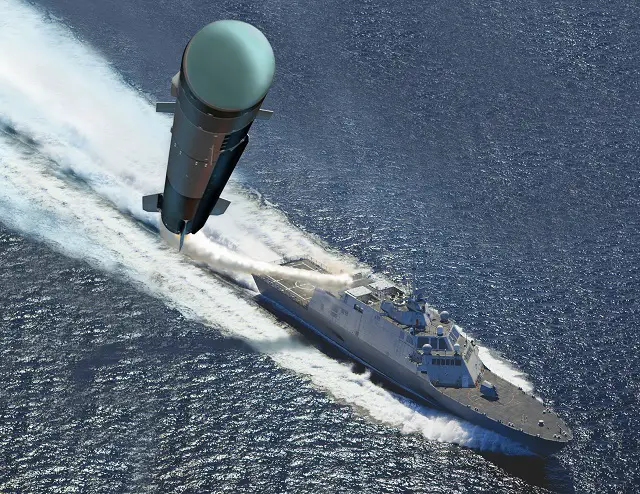Breaking news
U.S. Navy Conducts Restrained Missile Firing Test for LCS Surface-to-Surface Missile Module.
 Artist impression: Longbow missile launched from a Freedom class littoral combat ship Picture: Lockheed Martin |
|||
During the test of the missile
exhaust containment structure (MECS), a test designed to duct missile
exhaust and fire through plenum exhaust chambers in the top of the SSMM
module, one live Longbow Hellfire missile with inert warhead and non-functional
guidance section was fired but restrained in the launcher. As the missile's
rocket motor burned, exhaust and flames ducted properly through the
MECS plenums. |
|||



























